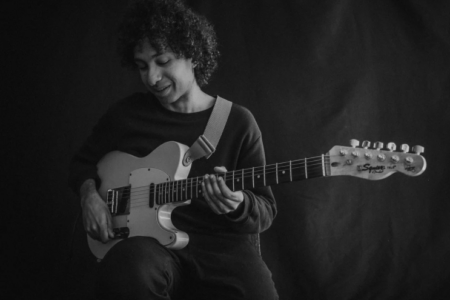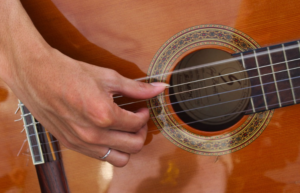Simple Tips for Learning Guitar on Your Own

Guitar lessons have their uses, and there is simply no substitute for an experienced mentor or teacher committed to helping you achieve your goals. However, it doesn’t seem like a good idea to ask someone to come to your house to teach you how to play the guitar since the coronavirus pandemic is still around. That being said, you should learn guitar in quarantine by yourself. However, there are also several good reasons to skip the classes and find your way. There are numerous simple yet effective tips for learning to play guitar on your own.

Tuning the guitar by ear
The first thing you should know as a new guitarist is the best way to tune the goods. It will describe how you can locate the strings in the song completely, and you will probably know that your guitar is in the correct tone whenever you practice. But, you really should understand to tune by ear. Then, start tuning the rest of the guitar to the E-bass you know is in tune. Understanding how to tune your guitar in this way can help tremendously in terms of your musical ear.
Start Building Your Own Chord Vocabulary
 Realistically, though, you will most likely need to focus on the principles that will help you play as fast as possible. We’re not looking for shortcuts here. The path to becoming a guitarist will be one regardless, and you could spend a lifetime playing and practicing without ever really mastering that instrument. However, I think one of the things that frustrate many new guitarists is the attention to detail that educators occasionally spend when teaching principles. Mentally, your palms won’t be used to squirming in those places, and you’ll most likely have to be patient until your muscles catch up to your brain.
Realistically, though, you will most likely need to focus on the principles that will help you play as fast as possible. We’re not looking for shortcuts here. The path to becoming a guitarist will be one regardless, and you could spend a lifetime playing and practicing without ever really mastering that instrument. However, I think one of the things that frustrate many new guitarists is the attention to detail that educators occasionally spend when teaching principles. Mentally, your palms won’t be used to squirming in those places, and you’ll most likely have to be patient until your muscles catch up to your brain.
Practice Playing Songs You Like
Chances are, you didn’t choose to be a guitarist to memorize chord names and spend endless hours doing basic strumming exercises. You’d love to play music! Some young musicians think you have to learn basic chords and scales until they can play the songs they know from the bands they like. It is not the case. By learning and playing a variety of these tunes, you will work on your chords in the context of real music. Most transcribed tunes have a list of these chords you should understand at the beginning, with diagrams of how to play them at the end.
Practice the Chromatic Learning Every Day
While you’ll be able to start playing real songs on the guitar fairly quickly, delving into the instrument takes a lot more work. You’ll probably need to be able to play solos and maybe even learn how to improvise. There’s still a long way to go for a beginner, but there’s no reason not to start laying the groundwork. I have found that the best way to do this is to learn exercises and scales daily. However, you may not be there yet, and that’s okay. Another much easier method is to practice an exercise called the daily chromatic exercise.
Practice More Often
Your victory with the guitar, or anything else in life, is directly related to the effort you put into it. Is it true that some people are more talented than others when it comes to music? Obviously, but don’t go around thinking that you can’t know how to play the guitar because you weren’t born with the ideal musical skills. That is non-sense. Some people may be more talented, and that can’t be controlled. My final advice is to work hard and play a lot. So you will get good at it.
